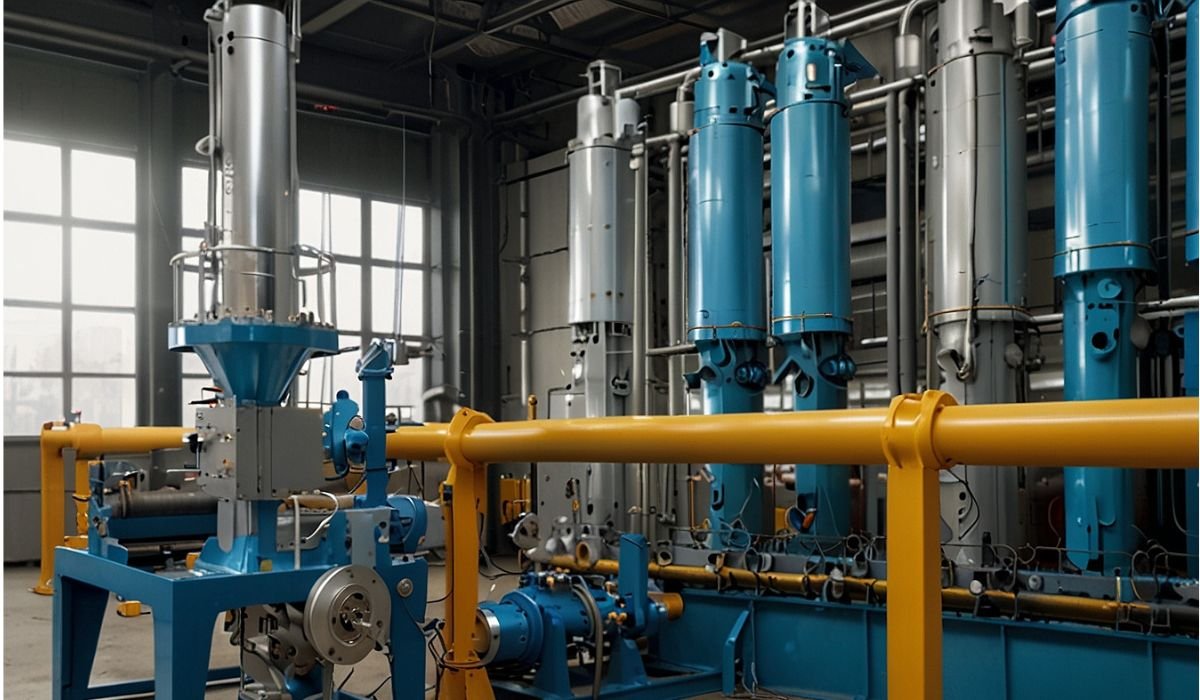Ever watched a glassblower transform a tiny bubble of molten glass into a beautiful, delicate vase? That same principle of controlled expansion is happening every second in factories worldwide, but with plastic. It’s the magic behind the plastic wrap in your kitchen, the grocery bags you carry, and the protective film on your new TV. The entire process hinges on one critical, behind-the-scenes number: the Blow Up Ratio.
Getting this ratio right isn’t just technical jargon—it’s the difference between a strong, reliable film and a defective, brittle one. Think of it like baking a soufflé; the recipe must be precise. This article will demystify the blow up ratio, showing you why it matters and how to use it to your advantage.
What Exactly Is the Blow Up Ratio (BUR)?
In its simplest form, the Blow Up Ratio is a measure of how much a molten plastic bubble is inflated during the film blowing process. It’s the expansion factor.
Let’s break it down with an analogy. Imagine blowing up a balloon. The amount you stretch the rubber from its initial, narrow state to its final, wide state is its “blow up ratio.” In plastic terms, we calculate it mathematically:
BUR = Final Bubble Diameter / Die Diameter
If the annular die (the circular hole the plastic comes out of) is 10 inches in diameter, and you inflate the bubble to 30 inches, your Blow Up Ratio is 3:1. This simple calculation is the single biggest influencer of your film’s physical properties.
Why the Blow Up Ratio is a Big Deal
You can’t just inflate the bubble to any random size. The BUR directly dictates three key characteristics of the final film:
- Molecular Orientation: Stretching the molten plastic aligns its polymer chains. This is like stretching a bundle of tangled threads until they all lie in the same direction. This alignment is crucial for strength.
- Physical Properties: A higher BUR generally increases the film’s tensile strength and toughness in the transverse (crosswise) direction. However, it can decrease strength in the machine direction (the direction it’s being pulled). It’s a balancing act.
- Optical Properties: Want crystal-clear film? The BUR plays a starring role. Proper expansion minimizes haze and increases gloss, which is vital for product packaging where visual appeal is everything.
- Final Film Thickness: This is a big one. The BUR, along with the take-up speed, directly determines your final gauge. A higher ratio results in a thinner film, assuming all other factors are constant.
To visualize this trade-off, imagine a simple chart in your mind: as the BUR number increases, the transverse strength line shoots up, while the machine direction strength line gently dips. Finding the sweet spot where these lines cross for your specific material is the goal.
Finding the Sweet Spot: Practical BUR Guidelines
So, what’s the “right” ratio? It depends entirely on your material and the product you’re making. Here’s a quick reference table for common applications:
| Material | Typical Blow Up Ratio (BUR) | Common Applications | Why This Ratio? |
| LDPE | 2:1 to 4:1 | Grocery bags, stretch film | Balances strength and elasticity perfectly. |
| HDPE | 3:1 to 5:1 | Retail shopping bags, cereal liners | Higher orientation needed for stiffness and crack resistance. |
| LLDPE | 2:1 to 4:1 | Thin films, heavy-duty sacks | Enhances puncture and tear resistance. |
| PP | 1:1 to 3:1 | Clear packaging, optical film | Lower ratios often used to maximize clarity and minimize haze. |
A Real-World Example: A major manufacturer like ExxonMobil might recommend a specific BUR range for their exact LLDPE grade to ensure a trash bag can hold heavy, sharp debris without tearing. Straying outside this window could lead to a flood of customer complaints.
Top 3 Myths About Blow Up Ratio—Busted!
- Myth: A bigger BUR is always better.
Truth: Not at all! An excessively high BUR can make the bubble unstable, difficult to cool, and can actually weaken the film in the machine direction. It can also lead to “frost line” height issues, causing poor optics. - Myth: BUR is the only thing that controls thickness.
Truth: It’s a duo! BUR works in tandem with the Draw Down Ratio (DDR)—the speed at which the film is pulled from the die. You manage final gauge by balancing both of these ratios together. - Myth: You can set it and forget it.
Truth: Environmental factors, minor resin batch variations, and cooling conditions can all affect bubble stability. Operators must monitor and make fine adjustments to maintain the target BUR consistently.
Your Action Plan: 3 Things to Try Tomorrow
Whether you’re a seasoned engineer or a new plant manager, here’s how to leverage this knowledge:
- Audit Your Settings: For your current production run, don’t just assume the BUR is correct. Actually measure the bubble diameter and calculate it. You might be surprised.
- Consult Your Resin Supplier: They have a wealth of data. Ask them for the recommended BUR and DDR for their material for your specific application. It’s the best starting point.
- Run a Small Test: If you’re battling a film quality issue like low clarity or weak seals, propose a small trial run. Adjust the BUR slightly within the recommended range and meticulously document the changes in the film’s properties.
Understanding the blow up ratio turns a complex process into a controllable tool. It’s the dial you turn to fine-tune the very essence of your plastic film.
What’s the most challenging film quality issue you’ve ever had to troubleshoot? Did adjusting the BUR play a part in solving it?
FAQs
Q1: How do you physically measure the blow up ratio on the production floor?
You measure the diameter of the stable, fully inflated bubble (usually at its frost line, where it turns from molten to solid) and divide it by the outer diameter of the die it was extruded from.
Q2: What happens if the blow up ratio is too low?
A low BUR results in less orientation of the polymer molecules. This typically leads to film that is weaker in the transverse direction, potentially stiffer, and may have reduced optical clarity.
Q3: Is blow up ratio used in any other processes besides blown film?
The concept of controlled expansion is similar in other blow molding processes, like making plastic bottles. However, the term “Blow Up Ratio” is most specifically and commonly associated with the blown film extrusion process.
Q4: How does BUR relate to the frost line height?
They are intimately connected. A higher BUR often requires a higher frost line to allow more time for the expanding bubble to stabilize before it solidifies. Adjusting one usually affects the other.
Q5: Can you change the BUR without changing the film thickness?
Yes, but you must simultaneously adjust the take-up speed (which affects the Draw Down Ratio) to compensate. If you increase the BUR to make the film wider, you must also increase the pull speed to maintain the same final gauge.
Q6: What’s a common sign of an unstable bubble due to incorrect BUR?
An unstable bubble may flutter, surge, or even collapse. It can also lead to gauge bands—thick and thin stripes running the length of the film roll—making it difficult to handle and convert.
You may also like: When Do You Need Backup Power?











